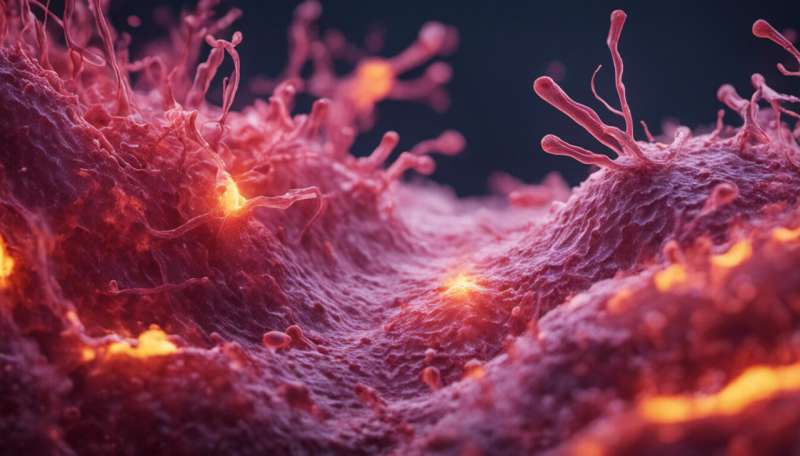This article has been reviewed according to Science X's editorial process and policies. Editors have highlighted the following attributes while ensuring the content's credibility:
fact-checked
peer-reviewed publication
trusted source
proofread
Newly discovered cells could be responsible for atherosclerosis complications

A new type of macrophage recently identified in atherosclerotic lesions could provide a missing link in understanding the inflammatory origins of the common yet fatal condition.
Atherosclerosis is a common condition in which an accumulation of fat, named plaque, builds up on the innermost walls of arteries, causing them to become narrow and restrict the blood flow to vital organs such as the heart and the brain. It can be life-threatening if untreated—narrow arteries increase the risk of a blockage and lead to a heart attack or stroke.
Macrophages are immune cells that play essential roles in organ homeostasis as well as infection and injury. Key to their success is the ability to alter their transcriptional patterns of gene expression to perform highly-specialized roles in specific organs and tissues. However, their prominent role means that when things go wrong, macrophages can be impactful drivers of disease.
In atherosclerosis, macrophages can transform into the fat-laden "foam" cells, which are also known as lipid-associated macrophages (LAMs) and are a hallmark of atherosclerosis and other diseases, such as obesity and neurological diseases. Foam cells have been recreated in vitro and are thought to become activated perpetuating inflammation in the artery wall and this inflammation contributes to disease progression. Atherosclerosis can therefore be considered a lipid-driven inflammatory disease and targeting inflammation has been shown to improve cardiovascular outcomes for patients.
However, the inflammatory origin of atherosclerosis remains a mystery. If atherosclerosis involves lipid-driven inflammation, signatures of inflammation should be found on foamy macrophages within the plaques, but nothing had been found so far, leading to significant controversy in the field. The Kennedy scientists aimed to find these patterns and used unbiased single cell biology approaches on over 22,000 immune cells from the plaques of patients who had undergone surgical carotid atherosclerosis removal.
The group identified a previously unknown state of LAMs, characterized by a joint lipid and inflammatory signature with high levels of the proteins PLIN2 and TREM1. The group found that LAMs can switch their phenotypic state from a homeostatic state to this newly discovered pathogenic and inflammatory state of inflammatory LAMs (iLAMs). The specific pattern of gene expression also suggests that these cells are a culprit for disease progression by recruiting other immune cells to atherosclerotic plaques. It seems that this new cell subtype represents a missing link and could explain the inflammatory nature of atherosclerosis and why anti-inflammatory treatments can be helpful.
As a proof of concept, this newly discovered cell state was more common in patients who had suffered from a cerebrovascular event, e.g., a vessel blockage which caused a stroke. This study, published in Nature Cardiovascular Research, opens the possibility that these macrophages may cause heart attack and stroke and could be targeted as a new treatment strategy within cardiovascular disease.
Claudia Monaco, the lead investigator, says, "The inflammatory foam cell has been theorized in vitro for decades, but it has been elusive to define as a unique entity in real life patients. Now thanks to the revolutionary development of single cell biology, which gives us a snapshot of the transcriptional states of all cells of the human plaque and the painstaking attention to detail of first authors Lea and Lada, we were able to 'catch them in the act' and gain clues about their development in the atherosclerotic environment through pattern recognition receptors."
More information: Lea Dib et al, Lipid-associated macrophages transition to an inflammatory state in human atherosclerosis, increasing the risk of cerebrovascular complications, Nature Cardiovascular Research (2023). DOI: 10.1038/s44161-023-00295-x




















